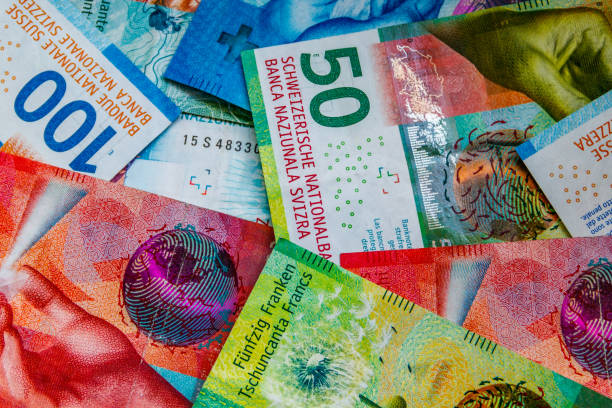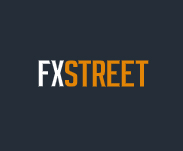USD/CHF posts modest gains above 0.9100, China hits back after US tariffs take effect
- Silver Price Forecast: XAG/USD surges to record high above $56 amid bullish momentum
- Silver Price Forecast: XAG/USD bulls remain focused on the $54.40 level
- Fed Chair Candidate: What Would a Hassett Nomination Mean for U.S. Stocks?
- The 2026 Fed Consensus Debate: Not Hassett, It’s About Whether Powell Stays or Goes
- U.S. PCE and 'Mini Jobs' Data in Focus as Salesforce (CRM) and Snowflake (SNOW) Report Earnings 【The week ahead】
- AUD/USD holds steady below 0.6550 as traders await Australian GDP release

USD/CHF holds positive ground around 0.9125 in Tuesday’s early European session.
China announced a levy of additional tariffs of up to 15% on select US imports starting February 10.
Swiss Real Retail Sales rose 2.6% YoY in December.
The USD/CHF pair trades with mild gains around 0.9125 during the early European session on Tuesday. The markets might turn cautious later in the day as traders await the developments surrounding tariff negotiations with China.
China's finance ministry on Tuesday announced a package of tariffs on a range of US products, including crude oil, farm equipment, and some autos, in an immediate response to a 10% tariff on Chinese imports announced by US President Donald Trump that went into effect at 05:01 GMT on Tuesday.
The development surrounding trade tariff policies will be closely monitored. Economists said the tariffs are widely expected to push up U.S. inflation, supporting the USD by keeping US interest rates higher for longer.
On the Swiss front, the country’s Real Retail Sales climbed by 2.6% YoY in December, compared to 1.4% (revised from 0.8%) prior, according to the Federal Statistical Office on Friday. This reading came in hotter than the 0.6% expected.
Swiss Franc FAQs
The Swiss Franc (CHF) is Switzerland’s official currency. It is among the top ten most traded currencies globally, reaching volumes that well exceed the size of the Swiss economy. Its value is determined by the broad market sentiment, the country’s economic health or action taken by the Swiss National Bank (SNB), among other factors. Between 2011 and 2015, the Swiss Franc was pegged to the Euro (EUR). The peg was abruptly removed, resulting in a more than 20% increase in the Franc’s value, causing a turmoil in markets. Even though the peg isn’t in force anymore, CHF fortunes tend to be highly correlated with the Euro ones due to the high dependency of the Swiss economy on the neighboring Eurozone.
The Swiss Franc (CHF) is considered a safe-haven asset, or a currency that investors tend to buy in times of market stress. This is due to the perceived status of Switzerland in the world: a stable economy, a strong export sector, big central bank reserves or a longstanding political stance towards neutrality in global conflicts make the country’s currency a good choice for investors fleeing from risks. Turbulent times are likely to strengthen CHF value against other currencies that are seen as more risky to invest in.
The Swiss National Bank (SNB) meets four times a year – once every quarter, less than other major central banks – to decide on monetary policy. The bank aims for an annual inflation rate of less than 2%. When inflation is above target or forecasted to be above target in the foreseeable future, the bank will attempt to tame price growth by raising its policy rate. Higher interest rates are generally positive for the Swiss Franc (CHF) as they lead to higher yields, making the country a more attractive place for investors. On the contrary, lower interest rates tend to weaken CHF.
Macroeconomic data releases in Switzerland are key to assessing the state of the economy and can impact the Swiss Franc’s (CHF) valuation. The Swiss economy is broadly stable, but any sudden change in economic growth, inflation, current account or the central bank’s currency reserves have the potential to trigger moves in CHF. Generally, high economic growth, low unemployment and high confidence are good for CHF. Conversely, if economic data points to weakening momentum, CHF is likely to depreciate.
As a small and open economy, Switzerland is heavily dependent on the health of the neighboring Eurozone economies. The broader European Union is Switzerland’s main economic partner and a key political ally, so macroeconomic and monetary policy stability in the Eurozone is essential for Switzerland and, thus, for the Swiss Franc (CHF). With such dependency, some models suggest that the correlation between the fortunes of the Euro (EUR) and the CHF is more than 90%, or close to perfect.
Read more
* The content presented above, whether from a third party or not, is considered as general advice only. This article should not be construed as containing investment advice, investment recommendations, an offer of or solicitation for any transactions in financial instruments.

